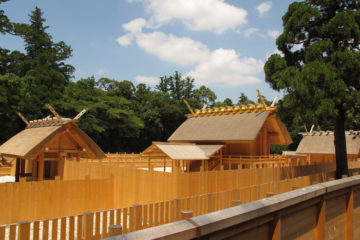Ninja Spots in Tokyo
※ Ninja were specially trained warriors who in medieval Japan practiced an ancient martial art and espionage called ninjutsu, which is usually translated into English as “the art of stealth.”

① The Hanzomon Gate

On the west side of what used to be the inner walls of Edo Castle, situated right in the heart of Tokyo, is a splendid-looking gate that straddles a wide moat ringed by high inner and outer walls. It’s referred to as the Hanzo-bori (Hanzo moat) and the gate is called Hanzo-mon (Hanzo gate). The name is believed to have been originated from Hattori Hanzo, who was a head of the Iga school of Ninja (based in what is now Mie Prefecture), and who was a close retainer to Tokugawa Ieyasu, (1543-1616), the first Shogun and founder of the Tokugawa dynasty, whose reign coincided with what is called the Edo period (1603-1867).

Hattori Hanzo’s residence stood close to the Hanzomon gate of Edo Castle, and Hanzo was said to be entrusted with defense of the gate. The same gate is the starting point of a thoroughfare called Koshu Kaido (also known as National Highway 20) that extends through the western parts of Tokyo to the neighboring province of Kai (or Koshu), in Yamanashi Prefecture near Mt. Fuji. While guarding the castle from potential enemies from the west, the road also served as an evacuation route that would have enabled Tokugawa forces to fight a rear-guard action to safety in the mountains. The name Hanzomon remains in use as a modern-day subway line and station on the Tokyo Metro.
② Sainen-ji temple
Grave of Hattori Hanzo

Monument of Tokugawa Nobuyasu

About 2.5 kilometers to the west of the Hanzomon Gate is the Sainen-ji temple, constructed by Hattori Hanzo in 1593 to consecrate Tokugawa Nobuyasu, eldest son of Tokugawa Ieyasu. Hattori Hanzo, who passed away in 1596 at age 56, is also interred here. His grave can be found to the side of the main hall, close to the monument to Nobuyasu. The temple has been designated a historical site by the City of Shinjuku. Hanzo was known in his time as “Hanzo the Lancer” because of his proficiency with the yari (Japanese spear), and the temple serves as a repository for his spear.
③ Hyakunin-bansho Guardhouse

Remnants of Edo Castle

The bansho, or guardhouse shown here was the biggest, situated just inside one of the main gates leading to Edo Castle. Its purpose was to screen arriving visitors during the Edo period. One hundred samurai guardsmen with ninja skills, chosen from among loyal retainers of each of four main branches of the Tokugawa clan, such as Iga or Koka, had their quarters there and worked in shifts that alternated day and night. The Edo castle remnants are on the east of the present-day Imperial Palace and are open to the public five days a week.
④ The Kaichu Inari Shrine

This area, named Hyakunin-cho, got its name from the troop of 100 musketeers from Iga serving the Tokugawa government who were based at this location, now in Tokyo’s bustling Shinjuku district. In olden times, when it was used as a practice range for muskets, but some soldiers who put their hearts and souls into practice were still deficient in marksmanship. After they prayed at the shrine, they showed spectacular improvement.
The shrine retains the torii (gate), purification trough, stone lanterns and other fixtures dedicated by the troop of 100, evoking images of the olden times. The five brigades of musketeers from Iga, Negoro, Koga and others were stationed around Edo Castle.
⑤ Ninja Restaurant
For those who wish to dine in a ninja-like atmosphere, this restaurant in Tokyo’s Akasaka district features décor and meals with a ninja theme. Now in its 10th year of operation, it is popular with foreign visitors.
(https://www.ninjaakasaka.com/)




0件のコメント